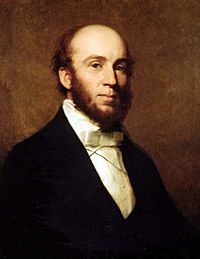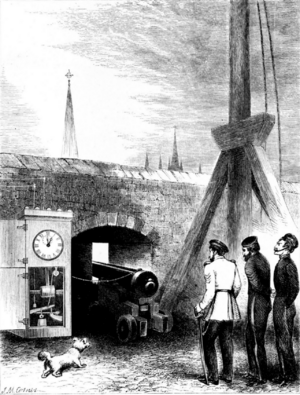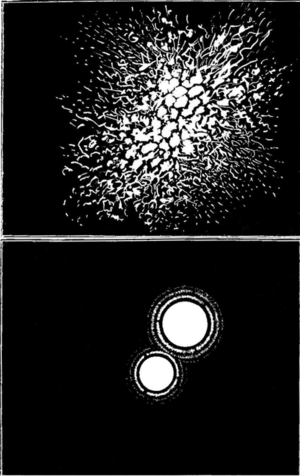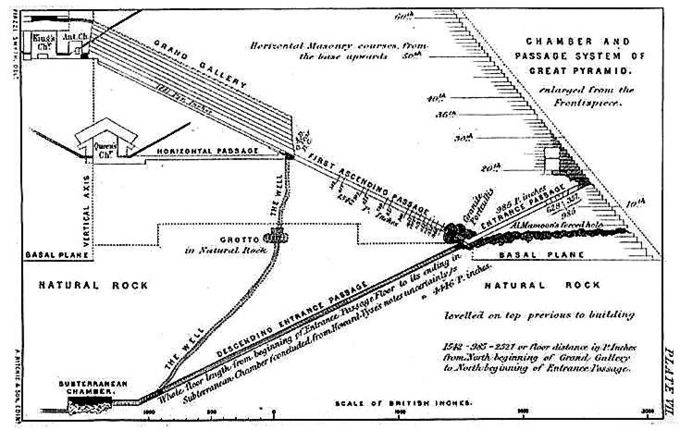Charles Piazzi Smyth facts for kids
Quick facts for kids
Charles Piazzi Smyth
|
|
|---|---|

Charles Piazzi Smyth
|
|
| Born | 3 January 1819 |
| Died | 21 February 1900 (aged 81) |
| Spouse(s) | Jessica Duncan Piazzi Smyth |
| Scientific career | |
| Fields | Astronomy |
| Institutions | Astronomer Royal for Scotland |
Charles Piazzi Smyth (born January 3, 1819 – died February 21, 1900) was a British astronomer born in Italy. He served as the Astronomer Royal for Scotland from 1846 to 1888. He is famous for his new ideas in astronomy. With his wife, Jessica Duncan Piazzi Smyth, he also studied the Great Pyramid of Giza. These studies involved measuring the pyramid and developing theories about it, which are sometimes called pyramidology.
Contents
Charles Piazzi Smyth: An Astronomer's Journey
Charles Piazzi Smyth was born in Naples, Italy. He was named after his godfather, the Italian astronomer Giuseppe Piazzi. Charles learned about astronomy from his father, who had his own observatory at home. When he was 16, Charles became an assistant to Sir Thomas Maclear in South Africa. There, he observed famous comets like Halley's comet. He also helped map the Earth's surface.
In 1846, Charles became the Astronomer Royal for Scotland. This meant he was in charge of the Calton Hill Observatory in Edinburgh. The observatory often didn't get enough money, so Charles did much of his important work elsewhere. He continued the observations started by the previous astronomer. In 1853, he helped set up a time ball on Nelson's Monument. This ball would drop at a certain time to help ships in the port of Leith know the exact time. Later, the One O'Clock Gun at Edinburgh Castle was added to give an even louder time signal.
Observing from Mountains
Back in 1704, Isaac Newton suggested that telescopes would work better on high mountains. He thought the air there would be clearer and steadier. For a long time, no one really tried this idea. But Charles Piazzi Smyth had seen how good observing was from mountain tops in South Africa. He was disappointed by the cloudy skies in Edinburgh.
In 1856, Smyth asked for money to take a telescope to Teide in Tenerife, a high mountain. He wanted to see if Newton was right. He got the money and even borrowed a large telescope and a yacht for the trip. His wife joined him on this and all his future trips.
They first set up camp on Mount Guajara, a peak about 8,900 feet (2,700 meters) high. They used mules to carry their equipment. They stayed for a month, making many observations. He found that the stars looked much clearer and steadier than in Edinburgh. He also detected heat coming from the Moon for the first time. Even with some dust, the sky was much better than at home.
The dust seemed to stay in lower layers of the air. So, Smyth decided to move higher up to Alta Vista, at 10,700 feet (3,260 meters) on Teide. This was the highest point mules could reach. He brought the larger telescope up in smaller pieces. From this higher spot, he made many important observations and detailed drawings. He was the first to show that placing telescopes on high mountains greatly improves observations. This is a common practice in astronomy today.
Smyth wrote a popular book about his trip called "Teneriffe, an Astronomer's Experiment." It was special because it was the first book to use stereoscopic photographs. These photos, taken by Smyth, allowed readers to see the images in 3-D using a special viewer.
Later Discoveries
Later in his career, Smyth studied the light from the aurora (Northern Lights) and the zodiacal light. He also created a detailed map of the solar spectrum (the colors of light from the sun). For this, he won a special prize.
In 1888, Smyth resigned from his job as Astronomer Royal. He was frustrated because his equipment was old and the observatory was still not getting enough money. This led to a big change. A generous donation helped build a new and modern Royal Observatory on Blackford Hill. After leaving his post, Smyth moved to Ripon, where he lived until his death.
Pyramid Studies
Charles Piazzi Smyth became very interested in the Great Pyramid of Giza after reading the ideas of John Taylor. Taylor believed the Great Pyramid was built by the biblical Noah. Smyth wanted to measure the pyramid very carefully. He took special equipment to measure every part of it, including the angles of passages and the size of the stones. He even used a special camera with magnesium light to photograph the inside of the pyramid for the first time.
After his trip, Smyth published a book called Our Inheritance in the Great Pyramid in 1864. In this book, he claimed that the pyramid's measurements showed a special unit of length called the "pyramid inch." He believed this pyramid inch was slightly longer than a regular British inch (about 1.001 inches). He thought this unit was given by God and used by the pyramid builders.
Smyth also believed the pyramid contained hidden messages and prophecies. For example, he claimed that the number of pyramid inches around the base of the pyramid was 100 times the number of days in a year. He also thought the pyramid's height in inches was related to the distance from Earth to the Sun. He used these ideas to argue against using the metric system in Britain, which he saw as a "French" idea.
Even though some of Smyth's pyramid theories are not accepted by scientists today, his work was important. He made the most accurate measurements of the Great Pyramid up to that time. His detailed drawings and calculations were published in several books. He even won a medal for his work. However, his ideas about the pyramid's design were later rejected by the Royal Society of London. This rejection contributed to his decision to resign as Astronomer Royal.
Impact of Smyth's Pyramid Ideas
Smyth's pyramid theories influenced others, including Charles Taze Russell, who founded the Bible Student movement. Russell used Smyth's ideas in his own writings. However, later leaders of the movement rejected pyramidology. Smyth's predictions for the Second Coming of Christ, based on pyramid measurements, did not come true.
Many experts debated Smyth's theories in the late 1800s. But over time, most scientists stopped supporting them. A big reason for this was the work of William Matthew Flinders Petrie, a famous Egyptologist. Petrie had initially supported Smyth's ideas. But when Petrie went to Egypt in 1880 and made new, even more accurate measurements, he found that the pyramid was several feet smaller than Smyth had believed. This discovery greatly weakened Smyth's theories, and Petrie himself rejected them.
Family and Life
In 1855, Charles Piazzi Smyth married Jessica "Jessie" Duncan. Jessie was a geologist who had traveled on many geological expeditions.
Charles Piazzi Smyth had several siblings. His brother, Warington Wilkinson Smyth, was a well-known geologist. His sister, Henrietta Grace Smyth, was the mother of Robert Baden-Powell, 1st Baron Baden-Powell, who founded the world Scouting Movement.
Charles Piazzi Smyth died in 1900. He was buried in the village of Sharow. A small, pyramid-shaped monument with a Christian cross marks his grave.
Honors and Recognition
Charles Piazzi Smyth was elected a member of the Royal Society of Edinburgh in 1846. He also became a Fellow of the Royal Society in 1857, but he resigned from it in 1874. He was also given honorary membership in the Institution of Engineers and Shipbuilders in Scotland. There is a crater on the moon named Piazzi Smyth in his honor.
See also
- Geographical centre of Earth




